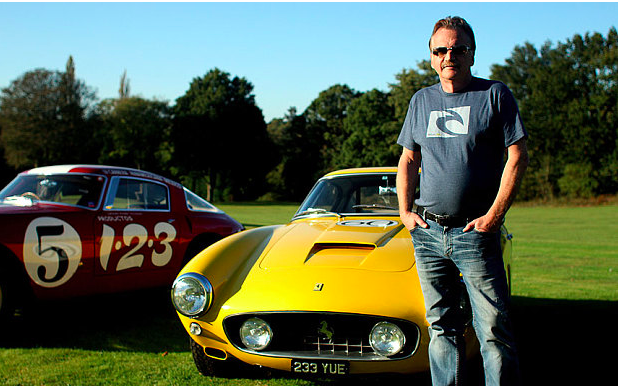Who would buy a number plate for £400,000? The answer is John Collins, a former photographer for Scottish newspapers (and a bit of a journalistic legend in his time) who is now Britain’s pre-eminent Ferrari dealer. He snapped up a ‘250’ number plate for half a million quid, after VAT. I interviewed him for my Ch4 documentary, How The Rich Get Richer (which you can still watch online for a few days, before it disappears forever).
The funny thing about this recovery is that average worker is paid (significantly) less than at the time of the crash and the 1pc are not really any better-off. The ones who have done the best are the 0.1pc, the ones who look down with pity at the 1pc. And then the 0.01pc are doing even better. They’re the sort of people who buy Ferraris from John.

John showed me his prize car (above): a Ferrari 250. This was the vehicle for which he has just paid £400,000 for a ’25 0′ number plate (picture below). It sounds crazy – until you realise that the car in question cost £1.25m at the time of the crash and is now worth more than £10 million. So since the crash, it has risen in value by at least £8.75 million.

The auctioneer with the number plate
When the crash came you might have expected froth to be blown off the top of the market. You’d expect the people who paid £1 million for an old car to be looking daft now – instead, they have multiplied their money several times over.
When John was explaining this phenomenon he mentioned Quantitative Easing, a device which (according to the Bank of England) added over £600 billion to asset values. The richest, of course, have most of the assets – so the people who did the best from this are those who had the most to start with. John’s point as that QE helped usher in the era of low interest rates, which led to an asset boom – and helped people like John Collins make crazy money selling cars to crazy-rich people.
There is nothing free market about artificially pinning interest rates to the floor. It’s said that this was vital, that without cheap debt then a debt-addicted government might have gone bust. Perhaps this is so, but the side effect of the cheap-debt era was to send asset prices soaring and deliver an almighty gift to the have-yachts while not doing much for the have-nots.
When John Collins was a young photographer, he made it to the top by spotting the big stories first. He spotted this financial story: a massive government intervention in the price of money, low rates, and a new era of crazy money with his clients having sums to spray around that even he would never have thought possible before the crash. The DJ Chris Evens, who flogged his vintage Ferraris in a panic, will be feeling mighty foolish now.
The result? £400,000 number-plates – with the money going to the government, this time, as it sells the plates. Lucky old Osborne.
UPDATE Like diamonds, fine wine, vintage watches etc personalised number plates are booming – as the wealth of those who buy them booms. Today’s FT reveals a 34pc rise in first-class travel since 2009. And here’s a piece in The Times’ Money section about it all.







Comments